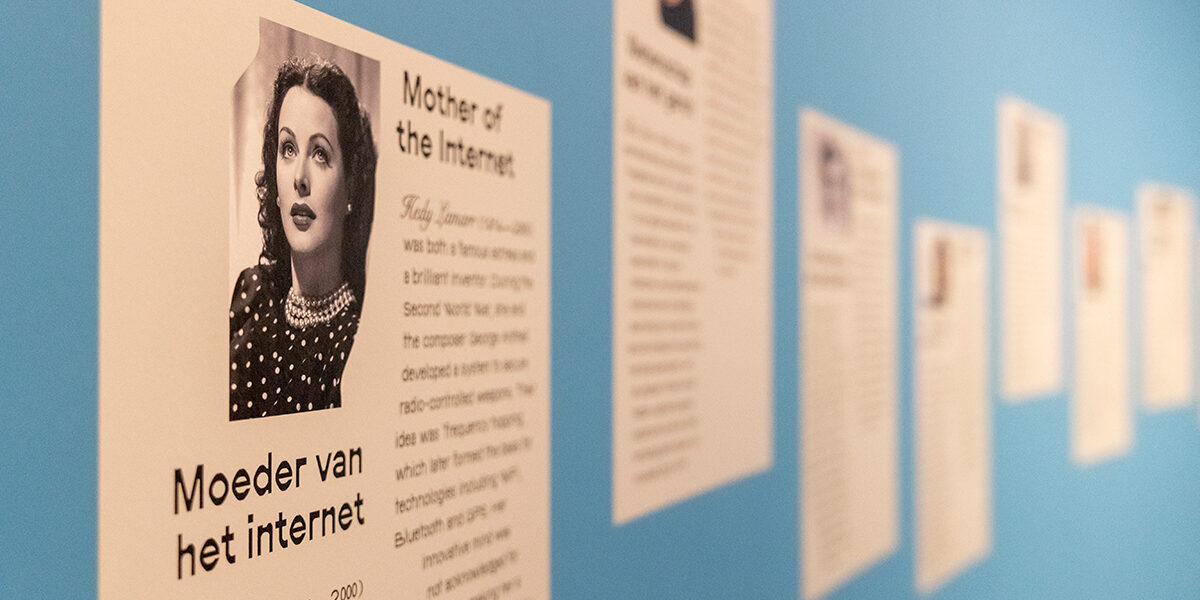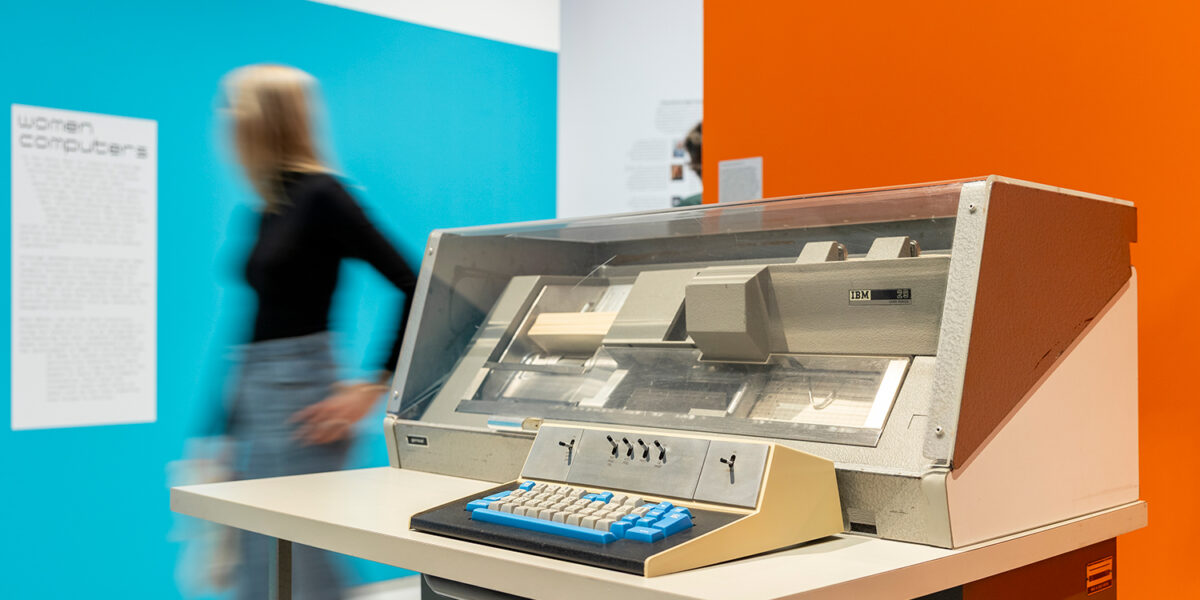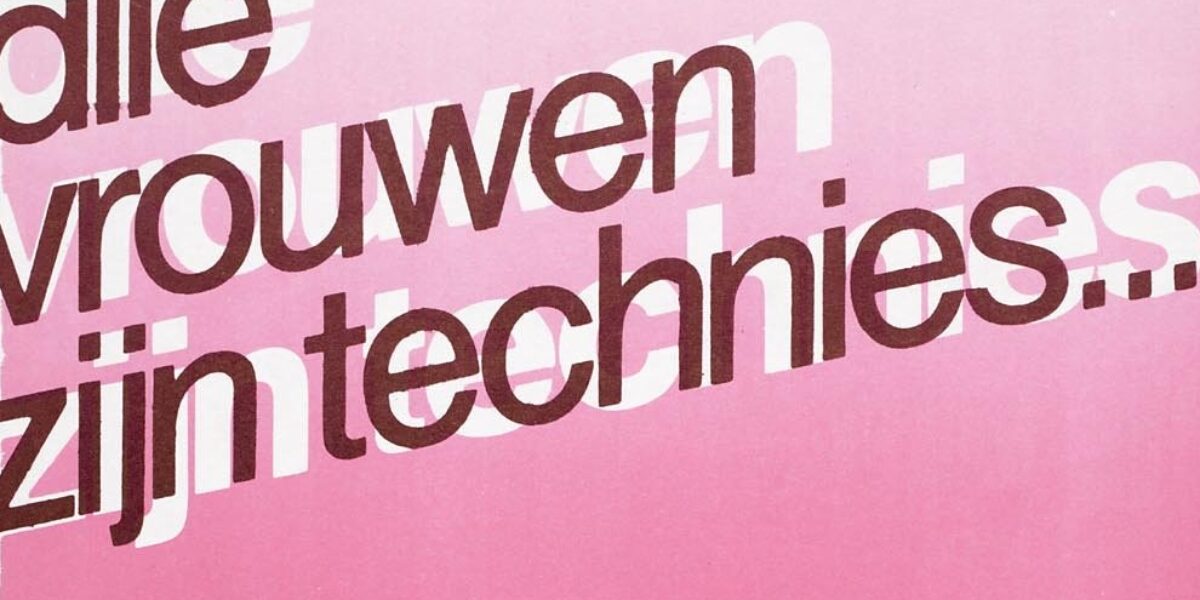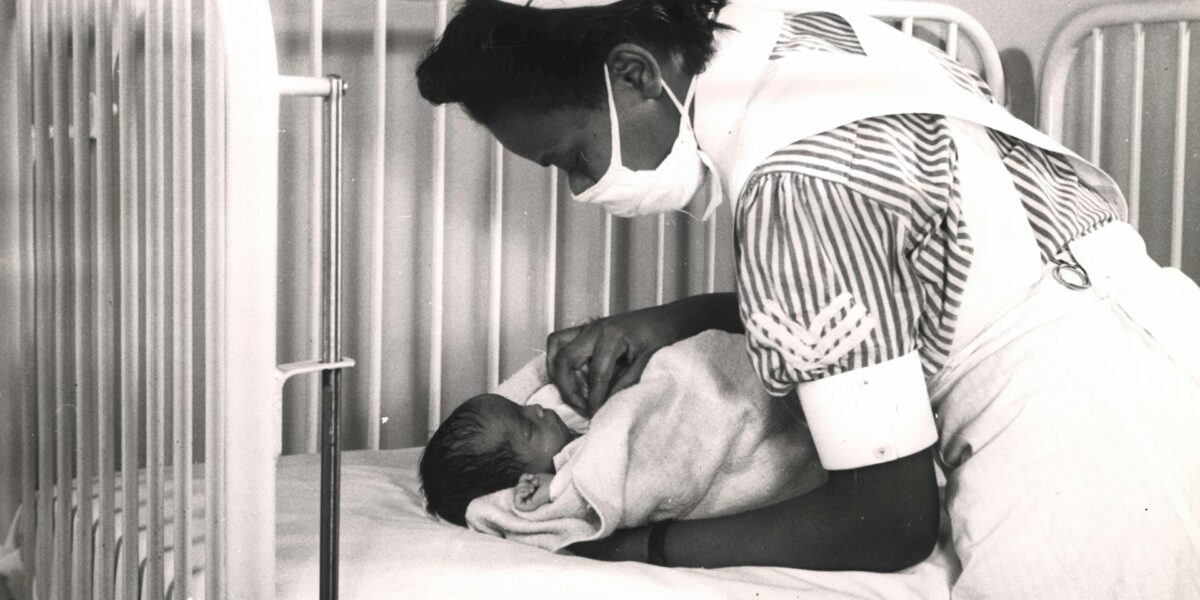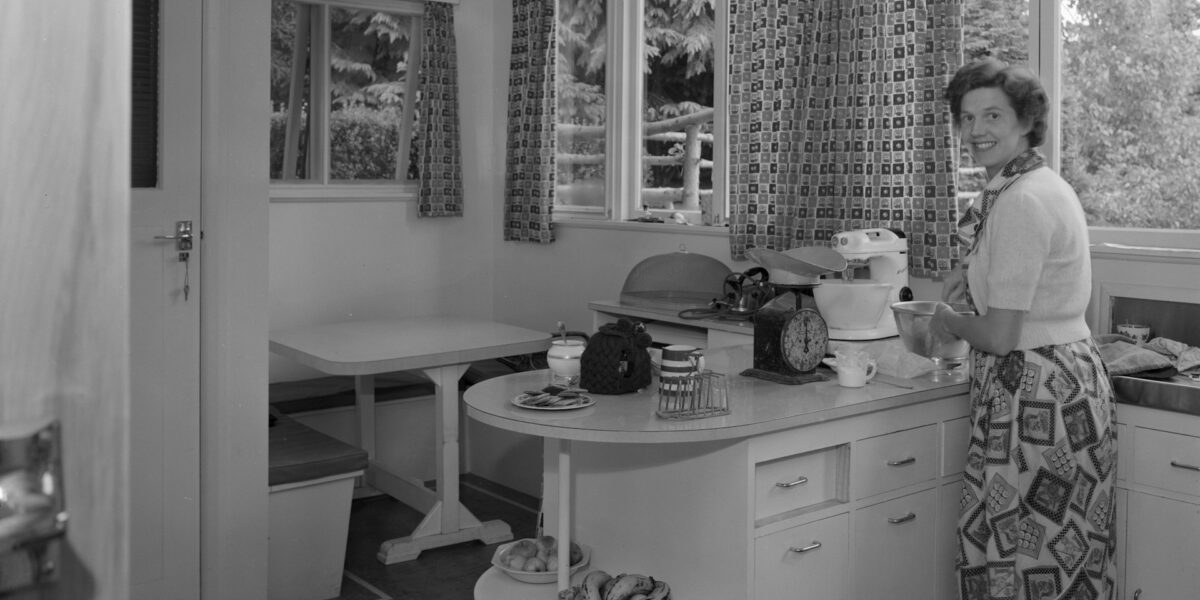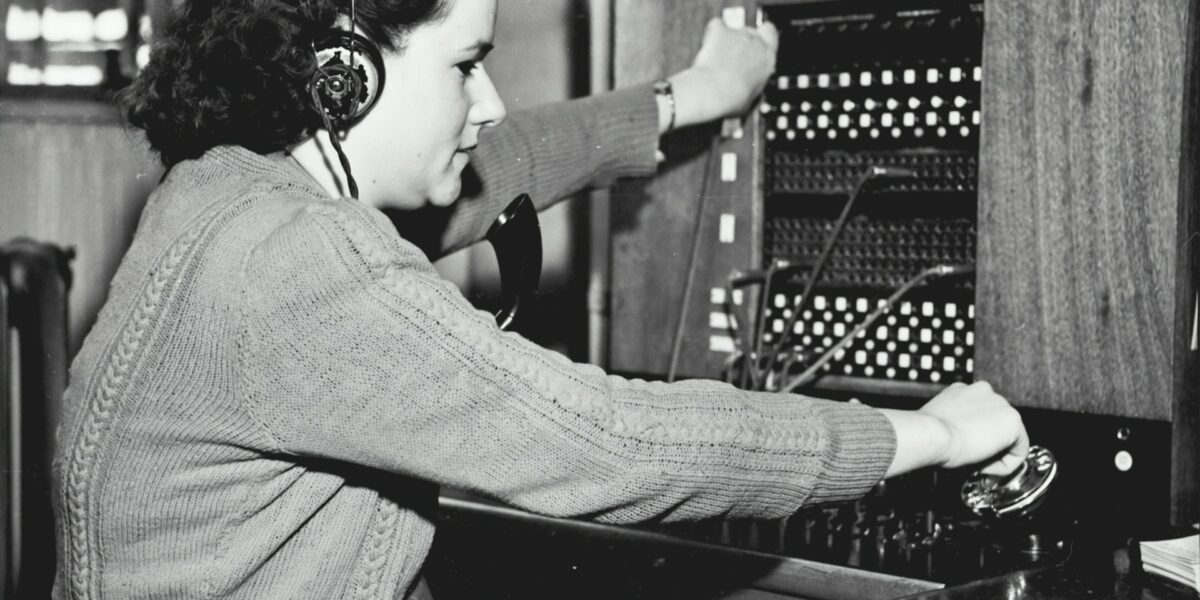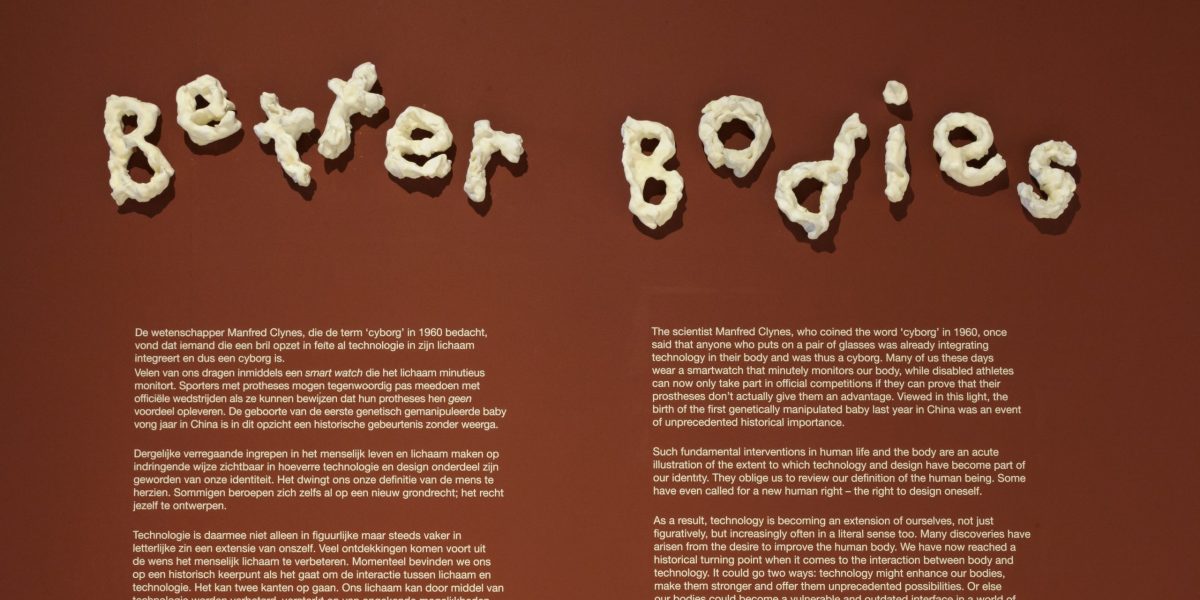Timeline legislation and regulations
The exhibition Women as Technology features a timeline of the themes of emancipation of women in the Netherlands, legislation and regulations and development of technology. In this article, you will find a more detailed explanation of the theme legislation and regulations.
1809
Abortion criminalized in the Kingdom of Holland
The Criminal Code for the Kingdom of Holland – based on the French model – prohibited abortion. Terminations had mostly been regulated on a regional basis in the 18th century, but the 19th brought a period of stricter, national legislation. Both the woman herself and the person performing the abortion risked banishment or up to six years in prison. An amendment was added in 1811 extending the prohibition to doctors who performed abortions without valid medical reasons. However, since abortion was difficult to prove, women were rarely prosecuted.
1811
Code pénal
Following annexation by the French Empire in 1810, French law applied in the Netherlands with effect from 1 January 1811. The French Code pénal, which set out criminal offences and the associated penalties, was enshrined in Dutch law. Even after the empire collapsed, the Code pénal remained in force until the Dutch Penal Code was introduced in 1886.
1815
Abolition of the transatlantic slave trade
After several profitable centuries, the transatlantic trade in enslaved people was banned in 1815. In 1808, the United States had passed the Act Prohibiting Importation of Slaves, which applied to newly enslaved people from Africa
1838
First Netherlands Civil Code
The Netherlands Civil Code (Burgerlijk Wetboek) came into effect in 1838 and remains partially in force to this day. It has its roots in the French Code civil, according to which, the husband was the head of the marital union and the wife was legally required to be obedient, implying legal approval of marital rape, among other things. Married women were legally unable to manage their own affairs. Divorce was only possible if the husband squandered shared marital assets through misconduct, thus exposing the family to ruin, or if his poor management endangered the woman’s personal assets.
1847
Association for the Improvement of Small Kindergartens
The Association for the Improvement of Small Kindergartens (Vereeniging tot Verbetering der Kleine Kinderbewaarplaatsen) was founded to address existing abuses. Early kindergartens were widely used by widows and by mothers with unemployed husbands. The Association set out to provide working-class children aged between six weeks and six years with clean, healthy day-care and decent nutrition. Attendance initially cost seven cents per day, the only requirement being that children were vaccinated against smallpox and were free of infection and vermin.
1863
Abolition of slavery
With effect from 1 July 1863, the Dutch Emancipation Act abolished slavery in the colony of Suriname and the six islands of Curaçao, Bonaire, Aruba, Sint Eustatius, Saba and Sint Maarten. Around 33,000 enslaved people were still employed on plantations in Suriname, and approximately 12,000 in the other Dutch Caribbean possessions. The Netherlands lagged behind other nations when it came to abolition.
1865
Dutch legislation on midwives
The first Medical Practice Act came into force in the Netherlands in 1865. It recognized, regulated and required training for midwives. While midwifery was historically a female occupation, it was now made subordinate to the hierarchy of a male medical profession. The act thus brought acknowledgement and restrictions at the same time.
1867
Higher Education Act
Thanks to Aletta Jacobs (1854–1929), the Dutch Higher Education Act of 1867 no longer discriminated on the basis of sex.
1871
First Dutch university chair for obstetrics and women’s diseases
A first combined professorship in obstetrics and women’s diseases was founded at Utrecht University in 1871. The chair was aimed at junior doctors, and marked the beginning of academic gynaecology as a recognized field. Women were not allowed to study medicine at the time.
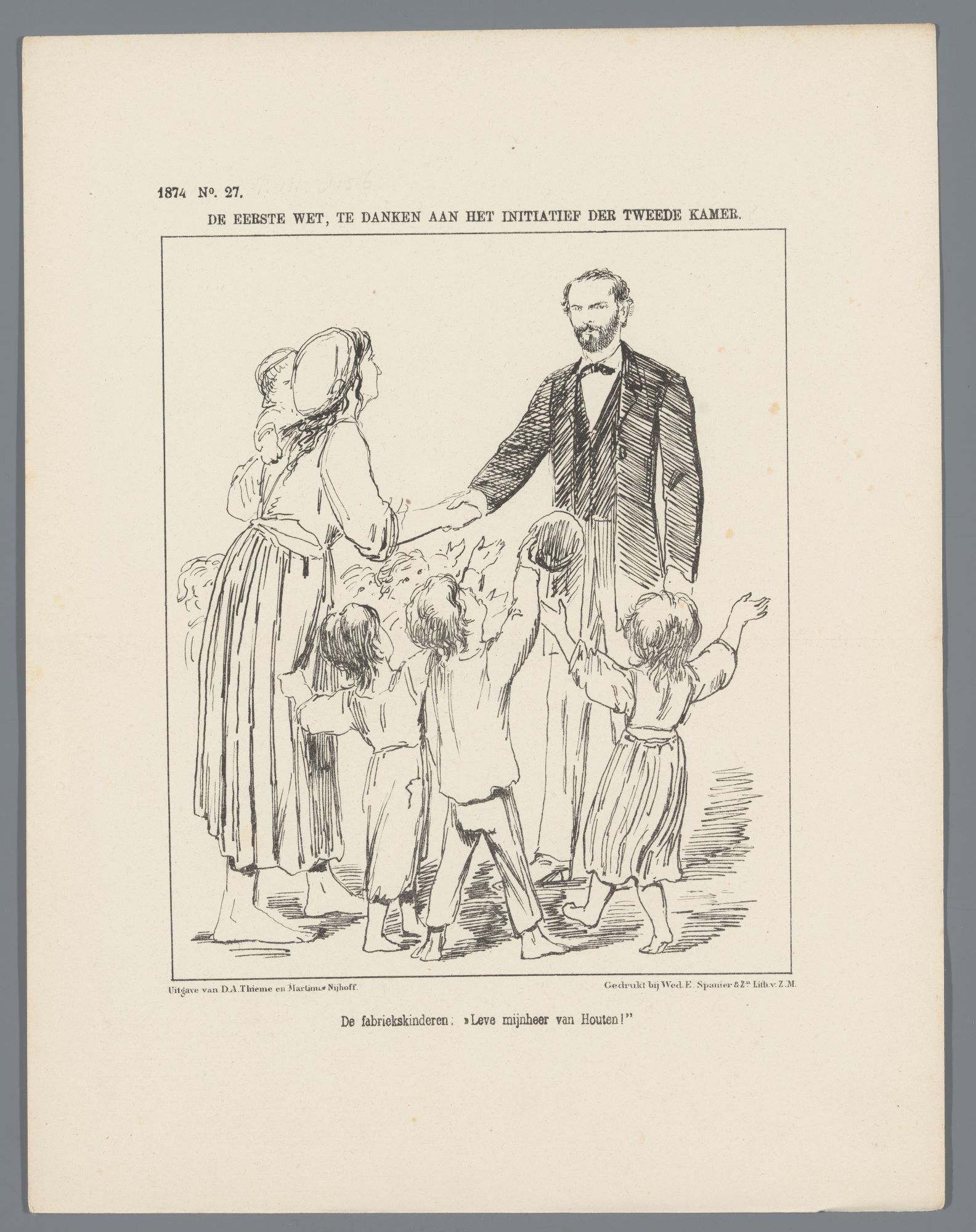
1874
Van Houten’s Child Protection Act
The politician Samuel van Houten was the author of the Act Concerning Measures to Combat Excessive Labour and Neglect of Children (Wet houdende maatregelen tot het tegengaan van overmatigen arbeid en verwaarlozing van kinderen), which prohibited children under the age of 12 from working. Exceptions were made for agriculture and for household chores. The act marked the beginning of regulation to restrict child labour.
1881
Foundation of the New Malthusian League
The New Malthusian League (Nieuw-Malthusiaansche Bond) was set up to improve the situation of the lower social classes via birth control. While the league engaged in charitable work in the field of contraceptive education, it also supported eugenics. Its director, Jan Rutgers (1850–1924) called, for instance, for those living in abject conditions to be prevented from reproducing. He also spoke about ‘racial improvement’, arguing that in order to maintain the purity of the race, ‘defectives’ should not be allowed to have children
1883
Constitutional amendment: male candidates only
Aletta Jacobs (1854–1929) wanted to stand for the election to Amsterdam City Council, but was refused on the grounds that she was a woman. An amendment to the Dutch constitution concerning ‘passive suffrage’ (the right to stand for election) was prepared that same year, mentioning only male citizens of the Netherlands.
1886
New Penal Code
Under the new Dutch Penal Code (Wetboek van Strafrecht), the pregnant woman was subject to less severe punishment than the person performing an abortion on her. Medical abortion was permitted, but this was not specified in the code, as the then Minister of Justice considered it self-evident. The new Penal Code came into force in 1886.
1888
Domestic Science School
The Hague Cookery School (Haagsche Kookschool) opened in 1888, marking the beginning of home economics in the Netherlands. The school trained its students to work as housekeepers or maids, but also prepared women for their ‘traditional’ role as housewives. Various useful domestic skills were taught, including cooking, budgeting and needlework. Until 1968, schools of this kind were only open to women.

1889
Labour Act for Young Persons and Women
The Labour Act for Young Persons and Women (Arbeidswet jeugdige personen en vrouwen) came into force in 1889. It was designed to protect children under 18 and women: no night or Sunday working, maximum working day of 11 hours, mandatory rest spaces, no dangerous work and no factory work shortly after giving birth. Exceptions were made for farming, shipping and fishing. In the view of Anna Polak (1874–1943), rather than protecting women, the act forced them out of their jobs.
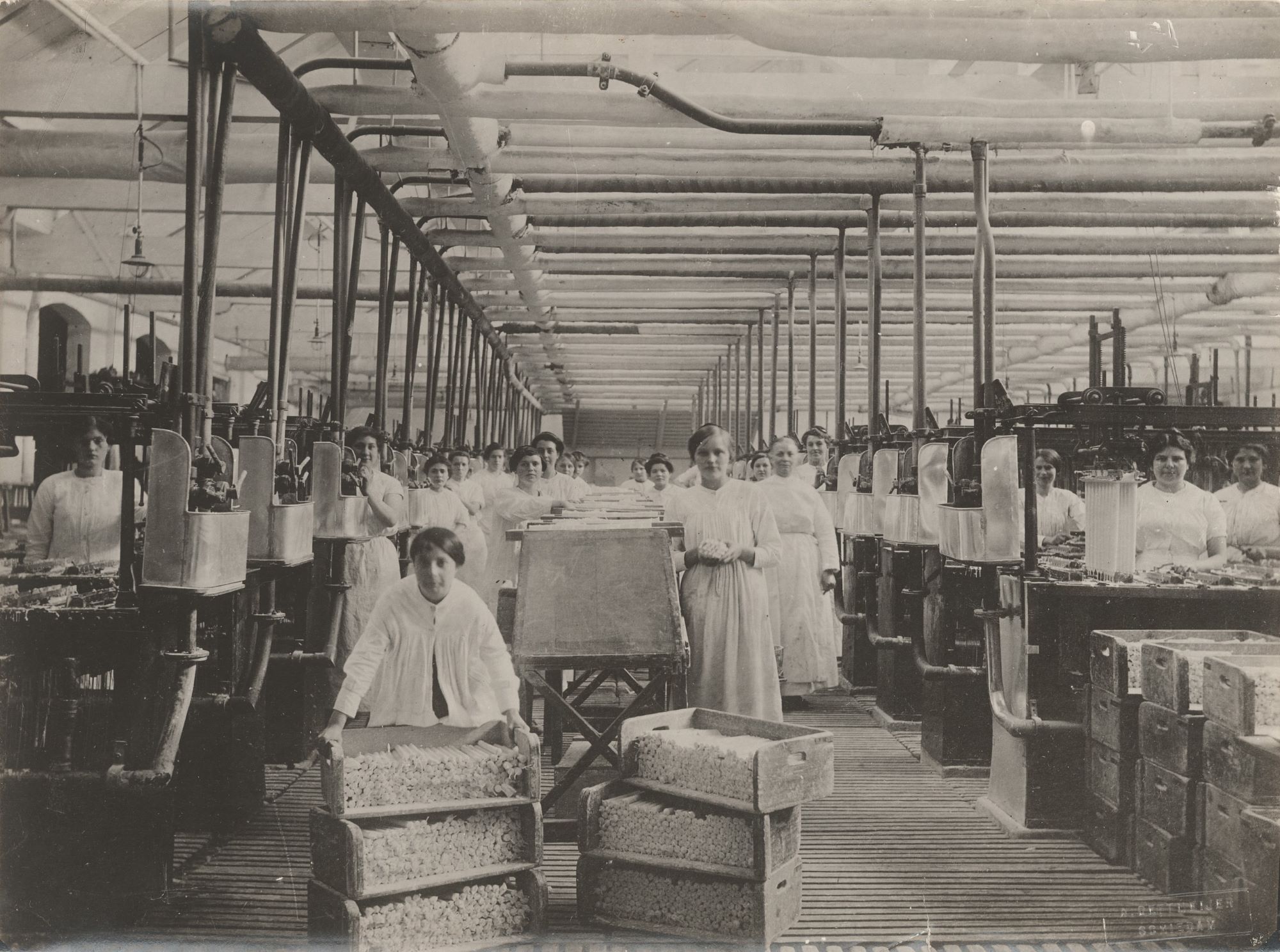
1896
Strike in Schiedam
In 1896, women employees at the Apollo Candle Factory in Schiedam came out on strike to demand the same pay rise that their male colleagues had recently received. Around 150 of them – more than half the factory’s female workforce – walked out on 10 July 1896, the first time a group of women had taken such action in the Netherlands. They worked around ten hours a day at the time and eventually secured a modest pay rise.
1897
First Dutch trade union for women
The first Dutch trade union for women was ‘All One’ (Allen Eén) founded by seamstresses in Amsterdam. Roosje Vos (1860–1932), who worked from home, became its chair. She wrote articles for the union’s magazine De Naaistersbode and spoke publicly for seamstresses who worked long days for a small hourly wage.
1901
Compulsory Education Act
The Compulsory Education Act (Leerplichtwet) came into force in 1901, requiring children aged between six and 12 to attend school. Some exceptions were made, including farmers’ children at harvest time. Daughters were also permitted to stay at home to care for the family. Compulsory school attendance did not apply, however, to the children of boatmen, Roma or fairground operators: this did not occur until the Compulsory Education Act of 1969.
1901
Criticism of abortion law
Hector Treub (1856–1920), a professor of obstetrics and gynaecology, described the ban on abortion in 1901 as ‘downright ridiculous’. He called for abortion to be legalized, which would have the effect of putting illegal abortionists out of business. An article of his in the legal journal Tijdschrift voor Strafrecht, in which he criticized the harder line the Catholic Church was taking on abortion, sparked a discussion that spread beyond medical and legal circles. This first national abortion debate led ultimately to the Public Morality Act (Zedelijkheidswet) of 1911.
1906
Free high school access
From 1906, girls no longer required the Minister of Education’s permission to study at HBS high schools.
1908
Women’s Suffrage Congress
The International Woman [sic] Suffrage Alliance was founded in 1904 and held its third congress in 1908 in Amsterdam, on the urging of Aletta Jacobs. She hoped that by staging the event in the Netherlands, she could influence a 1909 constitutional amendment in favour of women’s suffrage. Internationally renowned women such as Carrie Chapman Catt (1859–1947) and Millicent Fawcett (1847–1929) attended. The congress reinforced the position of the Dutch suffragette movement and prompted an influx of new members.
1911
Talma Labour Act
The Labour Act was amended in 1911 to allow the minister responsible to exclude women from certain professions on the grounds of danger to life, health or decency.
1911
Public Morality Act
The Public Morality Act redefined abortion from a ‘crime against life’ to one ‘against morality. This made it easier to prosecute, as evidence that a woman had been ‘taken under treatment’ was sufficient to secure a conviction. The act did not state explicitly that medical abortion was permitted and it also introduced a ban on the public display and sale of contraceptives, which was not repealed until 1970. The Public Morality Act remained in force until 1971.
1911
Labour Act Amendment
The Labour Act of 1889 was tightened up in 1911. A single working week could not longer exceed ten hours a day and a total of 58 hours. The act also stipulated that women were not allowed to work in factories after 1 pm on Saturdays, to give them time to get their homes ready for Sunday. Rules were further laid down regarding the working environment of women and children. They were not permitted to work, for instance, in a location that relied on artificial light between 9 am and 3 pm, and the overall space had to be sufficiently large. While regulations like this protected women and children, they also prevented them from competing with men and so had the secondary effect of excluding them from employment.
1919
Universal suffrage
Having been granted passive suffrage in 1917, women in the Netherlands now secured universal suffrage. This did not apply, however, throughout Dutch territories: women in Indonesia, for instance, only gained the right to vote in 1945 when the country declared its independence from the Netherlands. Women in Suriname and the Netherlands Antilles could stand for election from 1937 and received the right to vote in 1948.
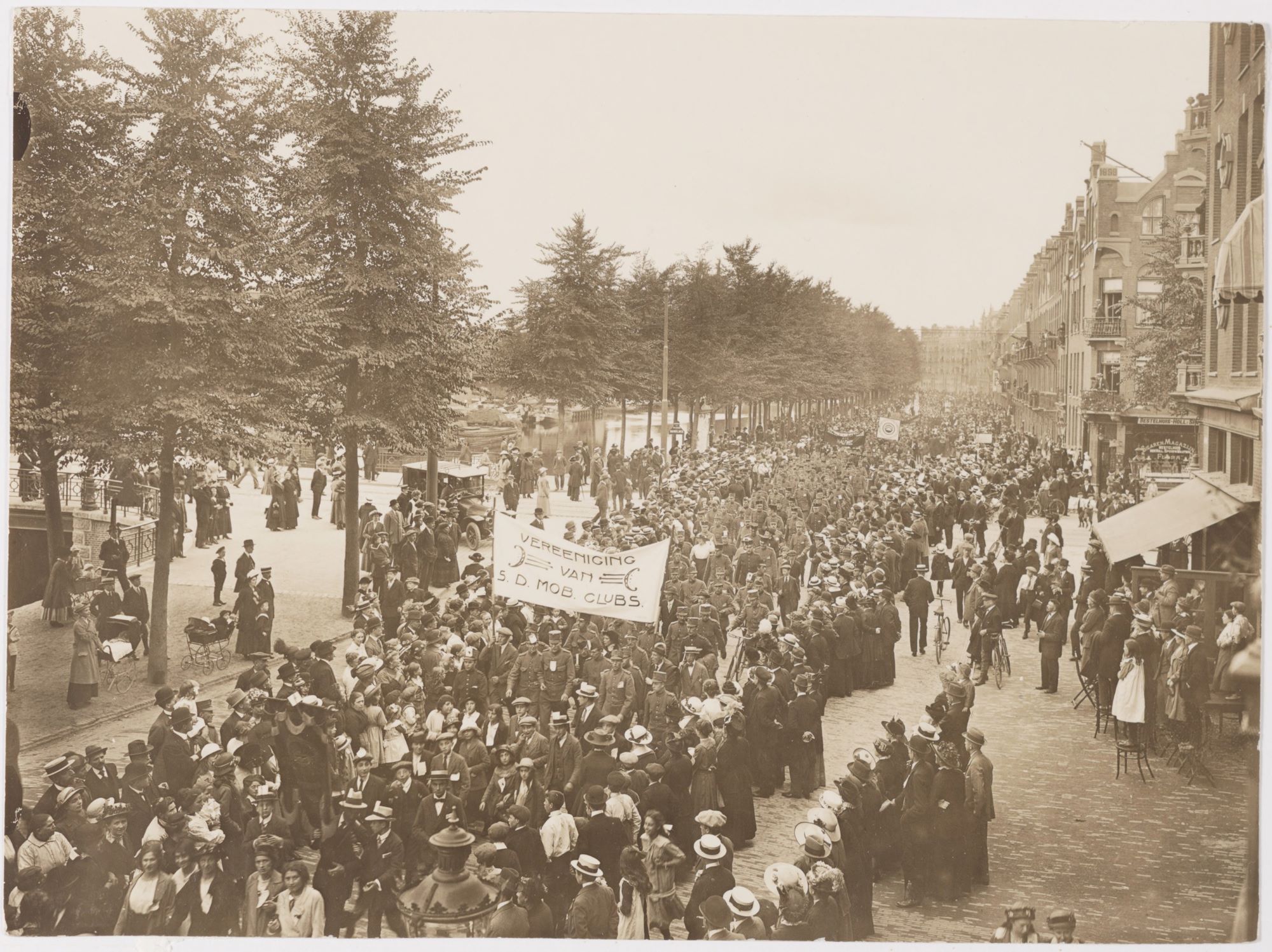
1919
Labour Act
A new Labour Act was passed in 1919 under the auspices of Piet Aalberse (1871–1948), the Netherlands’ first Minister of Labour. It enshrined the eight-hour working day and 45-hour working week, bringing men and women’s working hours into line. Stricter rules were imposed, however, on (physically demanding) work by women and on child labour.
1920
Home Fair
A ladies’ fair was organized in Amsterdam in 1920 by the women’s magazine De Amsterdamse Dameskroniek, an event that continues to this day as the Home Fair (Huishoudbeurs). The idea was to showcase and demonstrate new products to housewives. Gas and electricity were bringing about significant changes in Dutch homes, with an emerging market for a variety of appliances. The Home Fair has been held annually since 1950, complete with entertainment such as cabaret and fashion shows. It became an important venue in the 1950s and 60s for demonstrations of fridges, washing machines, food processors, dishwashers and microwave ovens.
1924
Honourable discharge
A royal decree was issued in 1924 stating that all women under the age of 45 in government service were to be ‘honourably discharged’ the day after marrying. The Lower House of Parliament passed a law in 1925 allowing municipal councils to dismiss women teachers under the age of 45 if they married. Carry Pothuis-Smit (1872–1951) unsuccessfully opposed the law in the Upper House. In 1937, the Minister of Social Affairs Carl Romme (1896–1980) sought to have married women banned from working entirely. Together with other Christian politicians, he wanted to ‘get women back where they belonged’, that is to say, at home at the kitchen sink.
1930
Sickness Benefits Act
The introduction of the Sickness Benefits Act (Ziektewet) provided women with 12 weeks of paid maternity leave. Suze Groeneweg (1875–1940) and Carry Pothuis-Smit (1872–1951) played a significant part in achieving this.
1945
United Nations
The United Nations enshrined the equality of men and women in its charter.
1948
Universal Declaration of Human Rights
The UN adopted the Universal Declaration of Human Rights in 1948, which has served ever since as an important moral and legal standard. It influences international treaties, national constitutions and the work of human rights organizations. Article 23 of the Declaration stresses the right to work and to equal opportunities and pay. The European Convention on Human Rights elaborated on these principles in 1950.
1951
Equal Remuneration Convention
The International Labour Organization (ILO) adopted the Equal Remuneration Convention in 1951, establishing that men and women must be paid equally for work of equal value. The convention stemmed from an ILO action point in 1950. Although many countries signed up to it, the Netherlands did not ratify the document, which therefore had no direct impact on pay disparities between Dutch men and women.
1955
Tendeloo Bill
In 1955, Corry Tendeloo (1897–1956) brought a bill before the Dutch parliament in which female civil servants – including teachers – would no longer be compulsorily dismissed upon marriage. The bill was passed in 1956, following which women were no longer stripped of their legal agency after marrying. It also meant that married women could now enter into contracts, including bank accounts and contracts of employment, and could conduct financial transactions on their own account. Nor were they legally required any longer to obey their husbands. As of 1958, women civil servants ceased to be dismissed automatically on marriage, but the practice was not explicitly prohibited
1963
Bishop Bekkers
On 21 March 1963, the Catholic Dutch bishop Wilhelmus Marinus Bekkers (1908–1966) appeared in the current affairs television show Brandpunt to talk about birth control. Bekkers, who had been technically briefed by the Dutch pharmaceutical company Organon, referred to fertility and the number of children as a matter for the personal responsibility and conscience of married couples themselves. His views caused a furore among his fellow clergy, but they also opened the debate on legalizing the contraceptive pill.
1969
Pekela Cigar Girls
In 1969, women employees at the Champ Clark cigar factory in Nieuwe Pekela, Groningen, went on strike when they were refused the same pay rise as their male colleagues. Their action drew national attention and support from women’s movements and other female factory workers in Nieuwe Pekela came out in sympathy. After two weeks, the cigar girls were sacked, prompting them to bring in the union to negotiate on their behalf. Four weeks into their strike, their pay was raised from 32 to 58 guilders a week. The strike resulted in both a collective labour agreement for the tobacco industry and in equal wages in the northern Netherlands and the major cities.
1969
Amended Compulsory Education Act
The new Compulsory Education Act (Leerplichtwet) introduced in 1969 required children between the ages of five and 16 to attend school. It also created the post of school attendance officer. The act abolished the option of home-schooling.
1970
Husband as head of the marital union
Although the subject had already become a matter of discussion in 1956, the husband was still the legal head of the family, a stipulation abolished when Book 1 of the Netherlands Civil Code came into effect in 1970. This did not put an end to all inequality: the husband still got to decide where to live, was legally obliged to provide housekeeping money and cast the decisive vote in the exercise of parental authority.
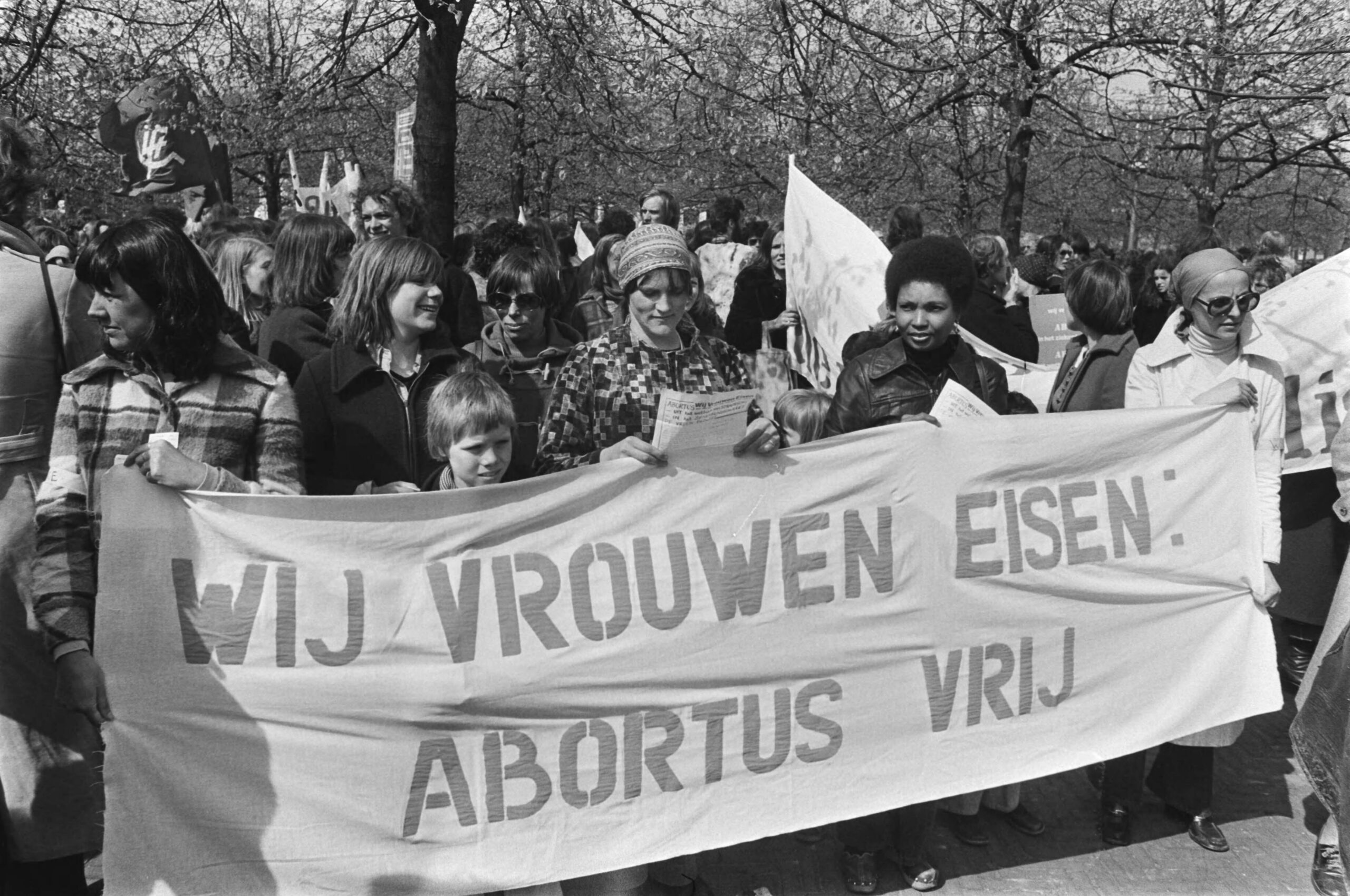
1970
Repeal of the Public Morality Act
Following the repeal of the Public Morality Act in 1970, it became possible once again to openly display and sell contraceptives. This also made the contraceptive pill available more widely. By 1975, 40% of Dutch women between the ages of 15 and 44 were using the pill. Broader availability did not mean, however, that the pill was accessible to everyone.
1971
The pill covered by medical insurance
The pill was now included among the services covered by standard medical insurance, triggering an explosion in the contraceptive’s use. Conservative GPs, whether Protestant or Catholic, often had moral objections and were thus three times less likely than other doctors to prescribe the pill to unmarried women, significantly hindering access to the contraceptive for certain groups of women.
1971
First abortion clinic
The Mildredhuis clinic in Arnhem was the first in the Netherlands to offer abortions. Clinics also opened that same year in Amsterdam, Beverwijk, The Hague, Rotterdam and Utrecht.
1976
Equal Pay Act
In 1973, Dolle Mina presented the ‘Working Bitches Plan’ (Werkende Wijvenplan) – a radical feminist action programme. The group demanded equal pay for equal work, equal opportunities in education and employment, free day-care for children, communal living facilities and individualization of taxes. The plan placed women’s employment firmly on the political agenda, but it was only in 1975 that the Equal Pay Act was adopted – an important step towards economic equality.
1980
Equal Treatment Act
The Equal Treatment Act introduced in 1980 prohibited employers from discriminating between men and women when entering into an employment contract, when instructing an employee, in the terms of employment, in working conditions, in promotion and on termination of the employment contract.
1982
Trusting technical women
The Dutch government stepped up its efforts in the 1980s to attract women into the technology sector. In 1982, the Ministry of Social Affairs and Employment launched the campaign ‘Trusting Technical Women’ to stimulate employers in the sector to recruit more women and to encourage women to gain skills in technical occupations. Posters were used to promote professions like welding, aircraft construction, crane operation and electrical engineering.
1984
Termination of Pregnancy Act
Abortion has been allowed in the Netherlands since 1984, thanks to the addition of exceptions to the Criminal Code. It is now permitted up to 24 weeks, provided the procedure is performed by a doctor at an abortion clinic or a hospital licensed to perform terminations. An abortion is only allowed after 24 weeks if the woman’s life is in danger. A legally imposed cooling-off period of five days was abolished in 2022. All the same, since abortion is still included in the Criminal Code, it is not strictly speaking legal, merely permitted under specified circumstances. There have been calls in recent years to amend the Penal Code to enshrine the right to termination. The Termination of Pregnancy Act (Wet afbreking zwangerschap) arose in an international context: the United Kingdom passed its own Abortion Act in 1967, the United States followed in 1973 with Roe v. Wade, and abortion was legalized in Belgium in 1990.
1987
I’d rather bend steel than braid hair
Through its campaign ‘Women wanted for men’s work’, the Dutch Ministry of Social Affairs and Employment set out to break traditional gender roles. Advertisements portrayed women not only as the end users of products but also as their makers. The posters used slogans with (untranslatable) puns – ‘I’d rather plug leaks than darn socks’, ‘I’d rather bend steel than braid hair’ and ‘I’d rather mix concrete than whip cream’ – to capture the imagination. There was an economic motivation behind the campaign too: men were increasingly opting for professions not traditionally viewed as masculine, creating a shortage of labour in the construction industry.
1991
Rape within marriage
The law was changed in 1991 to broaden the definition of rape. Since then, marital rape has been treated the same way as rape in other cases.
1993
Healthcare Professionals Act
The Healthcare Professionals Act (Wet op de Beroepen in de Individuele Gezondheidszorg, BIG) of 1993 established and protected the autonomous role of midwives in law. They were now permitted to work independently, subject to clear protocols. The act also offered renewed recognition of ‘natural childbirth’, including outside hospitals.
1994
General Equal Treatment Act
The General Equal Treatment Act of 1994 elaborates on Article 1 of the Dutch Constitution. The act prohibits discrimination based on religion, philosophy, political affiliation, race, sex, nationality, sexual orientation or marital status, with the aim of ensuring more equal treatment for all Dutch people.
2000
Brothel ban lifted
After decades of political wrangling, the prohibition of brothels in the Netherlands was rescinded in 2000. The intention was to protect sex workers, combat the exploitation of involuntary prostitution and manage and regulate the exploitation of prostitution generally. It also became illegal on 1 October 2000 to have sex with a sex worker under the age of 18.
2005
Childcare Act
The Childcare Act ensured that children’s day-care would be financed in future by three parties: government, parents and employer. It also introduced an income-dependent childcare allowance, making such care more accessible and affordable.
2011
Change to medical insurance coverage
As part of budget cuts in 2011, the Dutch government opted to remove the contraceptive pill from standard medical insurance coverage, citing a ‘lack of medical necessity’. Women under the age of 18 can still claim back the price of contraceptives; for those aged 18 to 20 it falls under the deductible; and over-21s have to pay for it themselves. In 2019, Bureau Clara Wichmann filed a lawsuit against the state, arguing that it is discriminatory to make women bear the costs of contraception.
2022
Roe v. Wade overturned
The US Supreme Court established the right to abortion in 1973 in the case of Roe versus Wade. The ruling was overturned, however in 2022, giving states the authority once more to prohibit abortion, even in the early stages of pregnancy. In more conservative states, this has made women’s access to safe abortion care more difficult or even impossible, and guidance during pregnancies has also disappeared, due to the closure of Planned Parenthood clinics. Fear of prosecution in the event of complications, meanwhile, has made doctors more reluctant to get involved.
2022
Women’s quota
The Dutch Entry Quota and Targets Act – also known as the ‘women’s quota’ was introduced in 2022 with a view to ensuring a more balanced male-female ratio in the upper echelons of the business world. The impact of the legislation is evident from the Female Board Index of 2024, which showed an increase in the number of female directors from 13% of the total to 33%. Eight in each 25 newly appointed directors is now a woman.
2023
European Pay Transparency Directive
The European Pay Transparency Directive promotes equal pay for men and women in the EU. Although the Netherlands passed the Equal Treatment Act in 1980, women still earn less than men for the same work. The directive includes measures for pay transparency and improved legal protection for employees. A bill will come before the Dutch Lower House in 2025, in which employers – large companies in particular – will be required to submit regular reports on pay disparities to the government.

